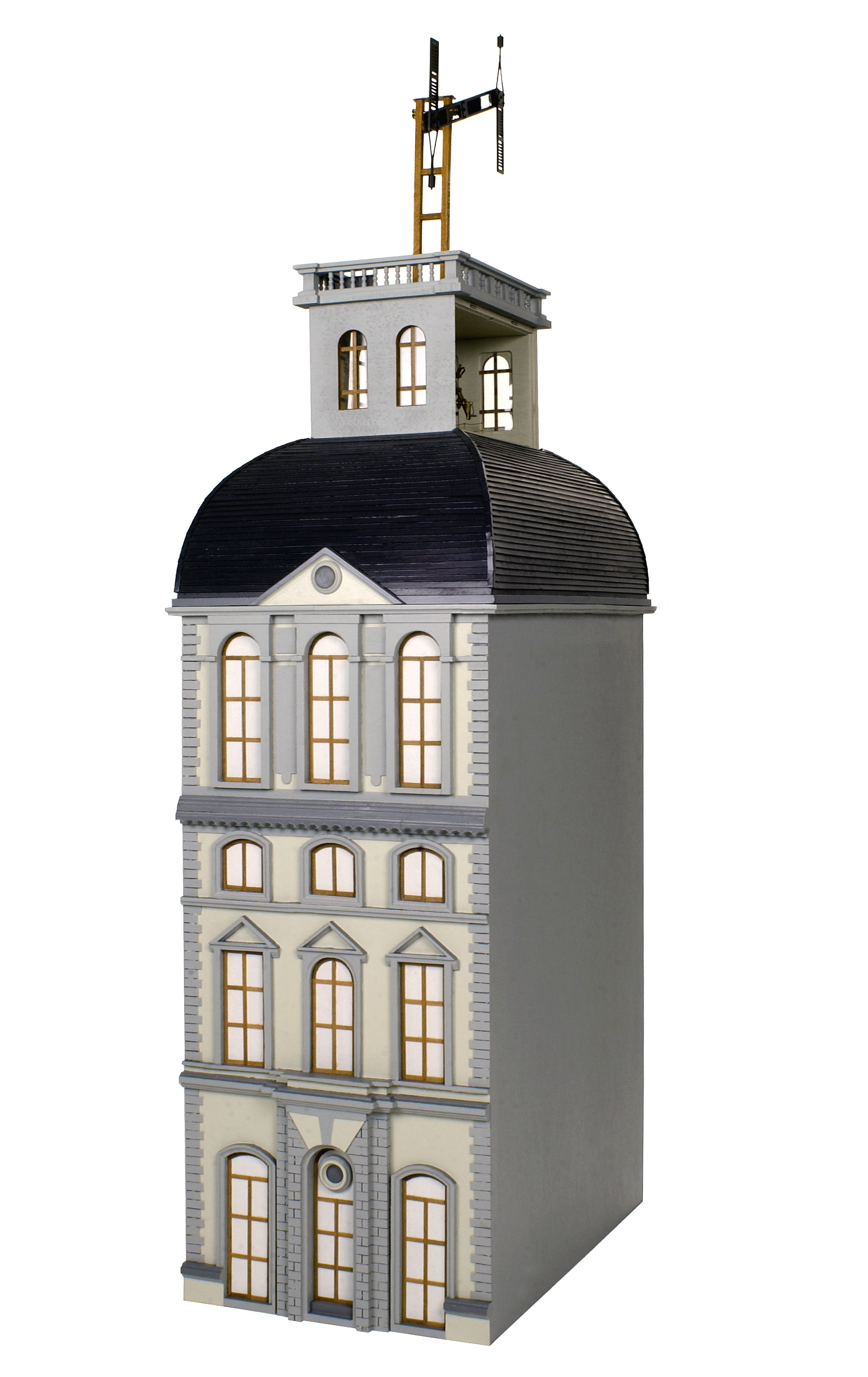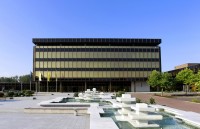Modell der Telegrafenstation auf dem Pavillon de Flore des Louvre in Paris.
Der optische Telegraf von Claude Chappe war das erste Fernmeldesystem. Mit ihm begann die Nachrichtentechnik.
Die Hauptteile des Chappe-Telegrafen waren:
- ein 4 m langer "Regluator", drehbar (breiter Balken in der Mitte)
- zwei knapp 2 m lange "Indikatoren"
(drehbare einarmige Flügel außen).
Zur Darstellung der Zeichen dienten Stellungen in Vielfachen von 45 Grad. 4 Sekunden dauerte die Einstellung eines Zeichens, 16 Sekunden blieb es dann stehen.
en

